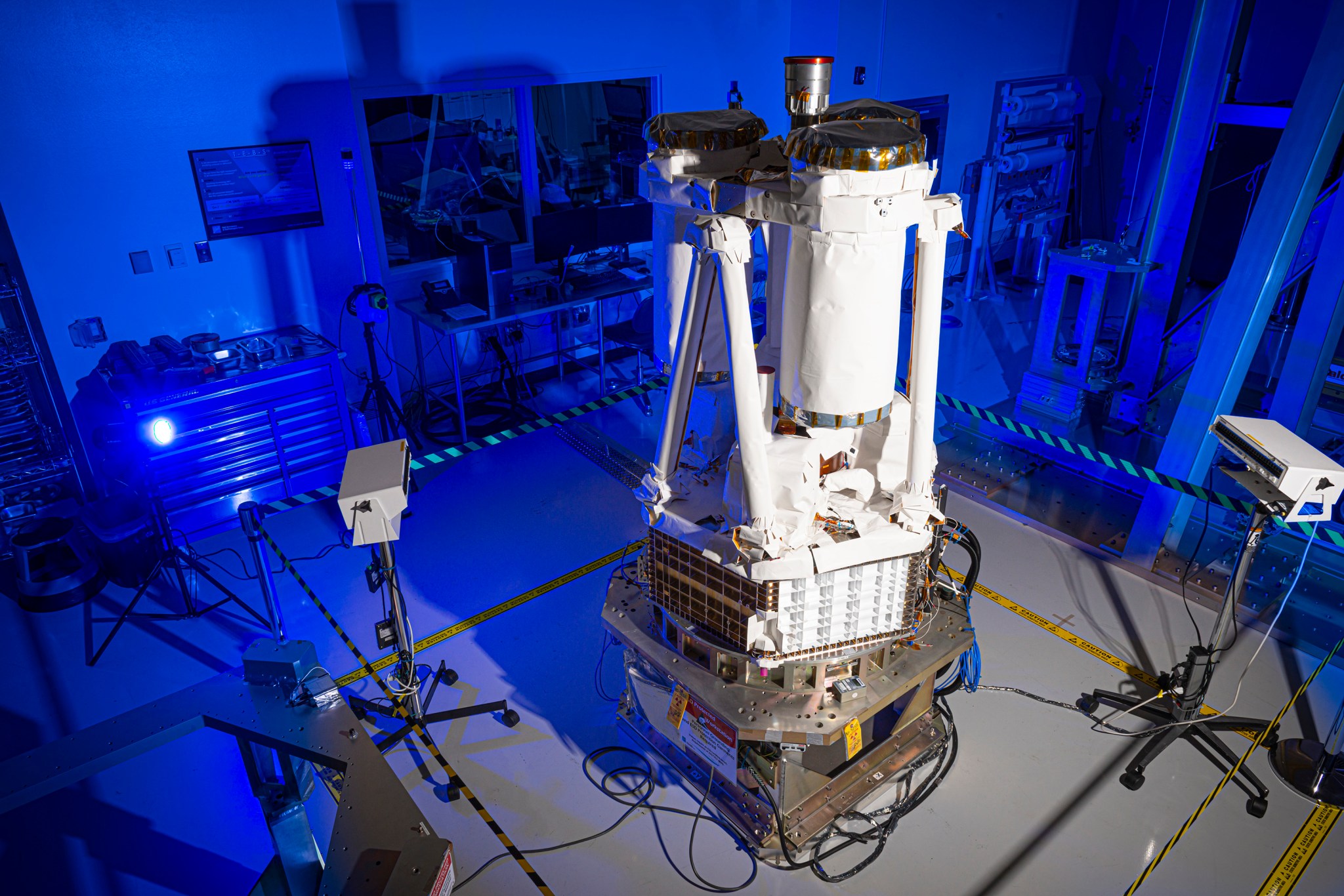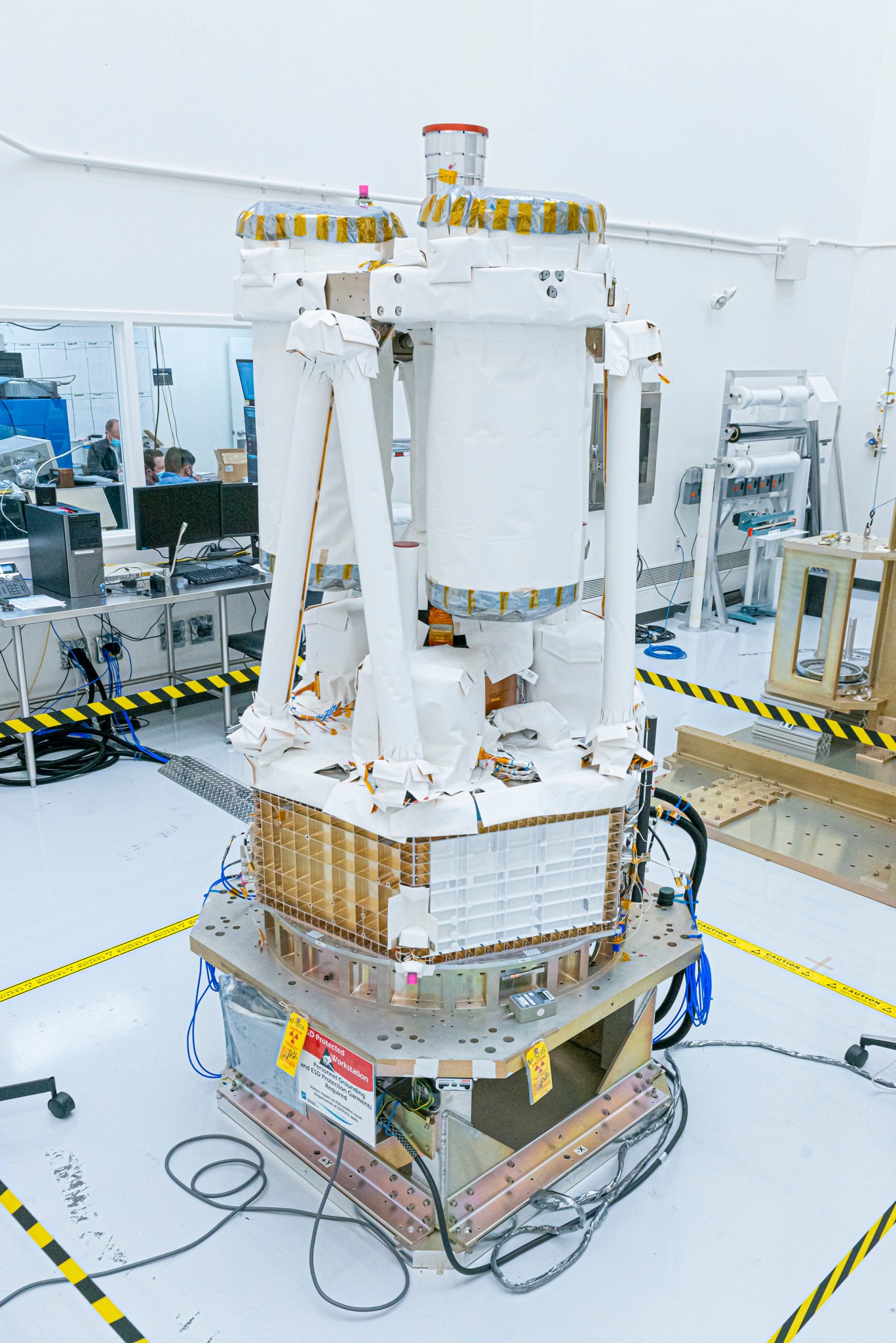Despite COVID-19-related hurdles, NASA’s newest X-ray astronomy mission is a step closer to launch. Engineers recently completed integration of the agency’s Imaging X-Ray Polarimetry Explorer, or IXPE, at Ball Aerospace in Boulder, Colorado. Now, Ball will put the fully assembled observatory through a series of tests that simulate the harsh conditions the small spacecraft will encounter on its rocket trip into space in late 2021.
“Reaching this milestone is a testament to the experience, commitment, and expertise of the IXPE team and our partners around the world,” said IXPE principal investigator Martin Weisskopf of NASA’s Marshall Space Flight Center in Huntsville, Alabama, who first conceived of the mission 30 years ago. “We’re all looking forward to providing world-class science and expanding our view of the X-ray universe.”
IXPE is the first small satellite mission dedicated to measuring the polarization of X-rays from a variety of cosmic sources — from black holes to exploded stars and jets traveling near the speed of light. IXPE’s polarization measurements will complement observations from other telescopes in space now, including NASA’s Chandra X-ray Observatory, adding new details about the nature of these mysterious objects and the environments close to them.
Upon completion, the IXPE observatory will be shipped to NASA’s Kennedy Space Center near Cape Canaveral, Florida, for launch from launch complex 39A on a SpaceX Falcon 9 vehicle.
Building IXPE during a Pandemic
A collaboration between NASA Marshall and the Italian Space Agency (ASI), IXPE consists of three identical X-ray telescopes, each containing a set of nested cylinder-shaped mirrors — known as “grazing incidence” mirrors — paired with a corresponding polarization-sensitive detector. IXPE’s polarization measurements are made possible by new detector technology contributed by ASI. Marshall’s responsibility was to build and calibrate the mirror assemblies and deliver them to Ball for assembly, integration, and environmental testing.
“As an international project, the IXPE team faced a lot of unexpected challenges in the face of the COVID-19 pandemic,” said Janice Houston, lead systems engineer at Marshall. “To get here has really taken a lot of teamwork and working through challenges. We have learned a lot about overcoming logistical difficulties — how to ship the hardware from one place to another during lockdown and how to remotely supervise and monitor handling and testing.”
In order to keep team members safe and healthy, NASA delayed assembly and calibration of IXPE’s mirror modules in mid-March, 2020. The IXPE team developed a new schedule to allow the team to reorder its assembly and testing timeline and get the spacecraft ready for launch.
The mirror assemblies left Marshall the afternoon of Sept. 9, arriving at Ball on Sept. 10 to be integrated into the spacecraft. Under normal circumstances, Marshall’s mirror module assembly team would help unpack and inspect the mirror modules after shipment. Instead, the team provided Ball with written procedures and video demonstrating post-shipment inspection, resulting in a successful integration.
With integration complete, IXPE will undergo environmental testing at Ball. Though each component of the observatory has been rigorously tested during development, demonstrating that the assembled flight hardware is able to safely pass through a simulated launch environment will be another significant achievement for the mission. NASA has worked carefully with its international partners to match the testing environment precisely to what IXPE will experience both on launch day, and when operating in orbit.
More about IXPE
NASA selected IXPE as a Small Explorer mission in 2017. IXPE is a collaboration between NASA and the Italian Space Agency, led by principal investigator Martin Weisskopf at NASA’s Marshall Space Flight Center in Huntsville, Alabama. Ball Aerospace, headquartered in Broomfield, Colorado, manages spacecraft operations with support from the University of Colorado at Boulder. NASA’s Goddard Space Flight Center in Greenbelt, Maryland, manages the Explorers Program for the agency’s Science Mission Directorate in Washington.




























